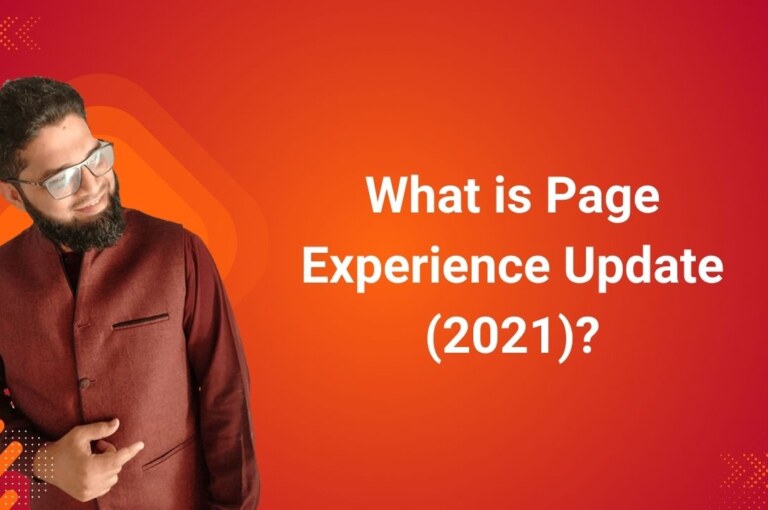What is Page Experience Update (2021)?
The Google Page Experience Update introduced in June 2021 was a significant shift in how Google ranks websites. This update focused on improving the user experience, integrating new signals alongside traditional ranking factors to better evaluate how users interact with a website. Here’s a detailed breakdown of how it works:
What Was the Purpose of the Google Page Experience Update?
The Page Experience Update aimed to improve the overall quality of search results by rewarding websites that deliver both great content and an excellent user experience. Google wanted to ensure that users don’t just find relevant, high-quality content but also experience a fast, interactive, and mobile-friendly interface.
Key Areas Addressed:
Content quality remained the primary focus, but Google now considered user experience equally important.
Websites offering a smooth, fast browsing experience are prioritized, particularly for mobile users.
The update emphasized mobile-first indexing, meaning Google now predominantly uses the mobile version of your website for ranking purposes.
How Did the Google Page Experience Update Impact Website Rankings?
The Page Experience Update added a new layer of evaluation to how websites are ranked. Here’s how it impacted SEO rankings:
Websites with better page experience (i.e., fast loading, mobile optimization, and secure browsing) were likely to rank higher in search results.
Core Web Vitals (such as LCP, FID, and CLS) were used to measure how fast and stable a site was during user interaction. These became key metrics in determining page experience.
Mobile-friendliness was essential. Google placed more importance on how well sites performed on mobile devices, which are now the dominant platform for web browsing.
Penalties:
Websites failing to meet these page experience criteria could see ranking drops, especially if competitors provided better experiences.
Core Web Vitals & Their Importance
Core Web Vitals are a set of three metrics that directly measure user experience:
1. Largest Contentful Paint (LCP):
What it Measures: How quickly the main content of a page loads.
Goal: LCP should occur within 2.5 seconds for an optimal experience.
2. First Input Delay (FID):
What it Measures: How quickly users can interact with a page after clicking on it.
Goal: FID should be less than 100 milliseconds to ensure fast interaction.
3. Cumulative Layout Shift (CLS):
What it Measures: How stable the page is as it loads.
Goal: A CLS score of 0.1 or lower ensures the page layout remains visually stable.
How Mobile Optimization Played a Key Role
Given the rising dominance of mobile browsing, mobile optimization was integral to the Page Experience Update. Google transitioned to mobile-first indexing, meaning it primarily evaluates mobile versions of websites for rankings. This highlighted the importance of responsive design:
Ensuring content fits different screen sizes
Reducing the need for zooming
Optimizing navigation for touch
Other Factors in the Update
Beyond Core Web Vitals, several additional factors were considered:
1. HTTPS Security:
Why it Matters: Sites with HTTPS encryption provide secure connections, protecting users’ privacy and data.
Impact: Google prioritizes secure websites in rankings.
2. Absence of Intrusive Interstitials:
What’s Wrong: Pop-ups that block content, particularly on mobile devices, were deemed disruptive.
Impact: Websites with intrusive pop-ups were penalized under the Page Experience Update.
3. Safe Browsing:
What’s Required: Google checks for malware or phishing content. Sites that protect users from harmful experiences rank better.
Key Benefits of Optimizing for the Page Experience Update
Optimizing for the Page Experience Update helps businesses by:
Higher Rankings: Websites with better user experiences are more likely to rank higher.
Better Engagement: Websites that load faster, are more stable, and are mobile-friendly, have lower bounce rates, higher engagement, and better conversion rates.
Increased Mobile Visibility: As mobile browsing continues to increase, optimizing for mobile-first indexing is essential.
Reduced Bounce Rates: Sites with fast loading speeds and stable layouts encourage users to stay longer and explore more content.
How to Optimize for the Page Experience Update?
Website owners can improve their page experience by focusing on:
Core Web Vitals: Use tools like Google PageSpeed Insights to evaluate and optimize load speed (LCP), interaction (FID), and layout stability (CLS).
Mobile Optimization: Ensure the site works well across various devices with responsive design.
HTTPS: Ensure that the website is secure with HTTPS encryption.
Page Speed: Compress images, reduce server response times, and utilize caching to improve speed.
Avoid Intrusive Pop-ups: Ensure pop-ups are not intrusive or block important content, especially on mobile.
Final Thoughts on Page Experience Update
The Page Experience Update has shifted SEO by integrating user experience metrics like Core Web Vitals into traditional content ranking signals (e.g., keyword relevance, backlinks).
SEO now incorporates user experience as a ranking factor.
Mobile optimization and site speed are no longer optional.
Technical SEO now includes optimization for speed, security, and mobile-first design.
In essence, SEO is now user-centered. Websites must optimize for both search engines and human users to succeed.
Want to Go Deeper into SEO?
Explore more from my SEO knowledge base:
▪️ SEO & Content Marketing Hub — Learn how content builds authority and visibility
▪️ Search Engine Semantics Hub — A resource on entities, meaning, and search intent
▪️ Join My SEO Academy — Step-by-step guidance for beginners to advanced learners
Whether you’re learning, growing, or scaling, you’ll find everything you need to build real SEO skills.
Feeling stuck with your SEO strategy?
If you’re unclear on next steps, I’m offering a free one-on-one audit session to help and let’s get you moving forward.




